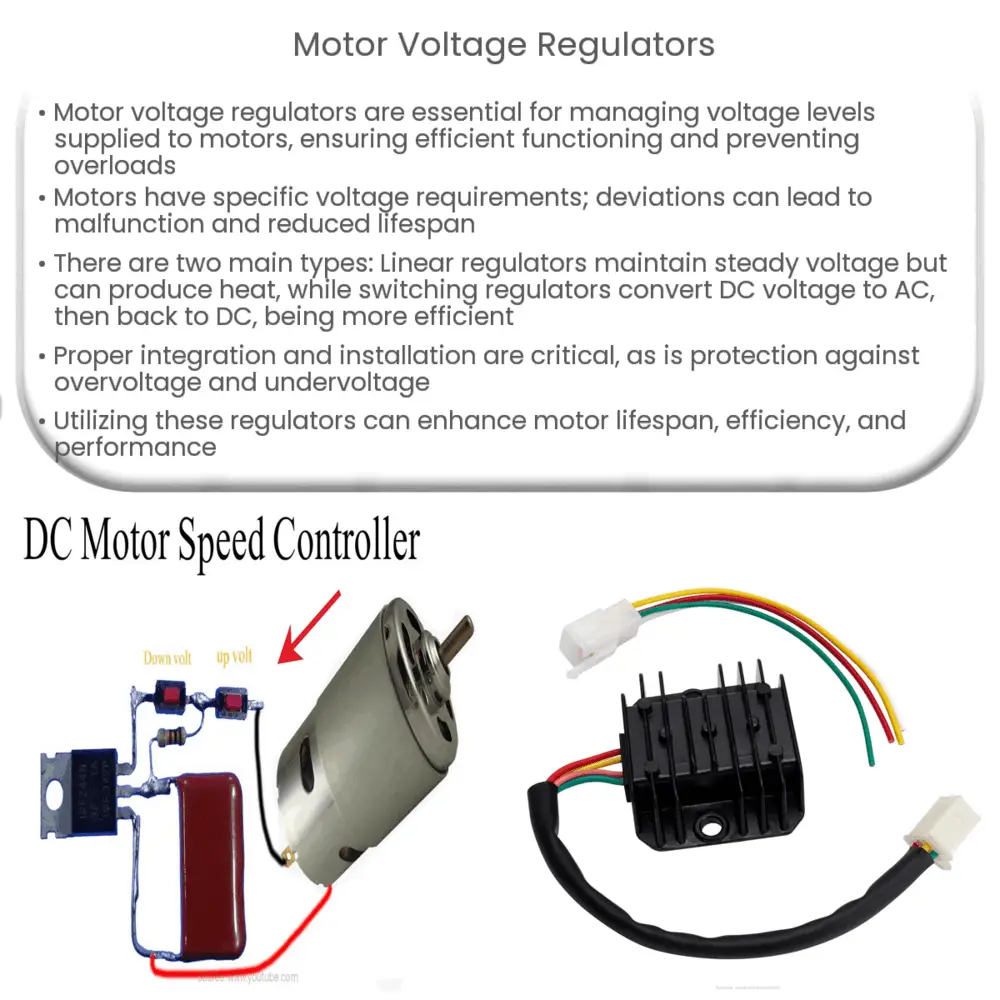Explore the importance, types, and working mechanism of motor voltage regulators. Learn how they enhance motor performance and lifespan.

Understanding Motor Voltage Regulators
A motor voltage regulator is an integral component of an electrical motor control system. This piece of equipment primarily helps to manage the voltage levels that are being supplied to a motor. The purpose of maintaining constant voltage is to ensure the motor functions efficiently, without overloading or experiencing underperformance due to fluctuations in voltage.
The Need for Motor Voltage Regulators
Every motor has a certain voltage requirement that enables it to operate efficiently. If the voltage supply surpasses or falls short of this requirement, it can lead to a variety of issues, including motor malfunction, reduced motor life, and inefficient energy usage. Voltage regulators rectify these concerns by maintaining a constant supply of power.
Types of Motor Voltage Regulators
- Linear Voltage Regulators: Linear regulators are a type of motor voltage regulator that use a control loop to maintain a steady output voltage. They are highly efficient and simple in design but can generate a significant amount of heat.
- Switching Voltage Regulators: These regulators use a switch to convert the incoming DC voltage to AC, then convert it back to a more controllable DC voltage. They are more efficient and generate less heat than linear regulators.
How Does a Motor Voltage Regulator Work?
A motor voltage regulator works by sensing the output voltage of the motor and adjusting it according to the set reference voltage. The regulator can either increase or decrease the output voltage to maintain the desired voltage level. This regulation is usually done using a comparator or feedback control loop, which compares the output voltage with a reference voltage and adjusts the output accordingly.
Factors to Consider When Choosing a Motor Voltage Regulator
- Motor Type: The type of motor in use can influence the choice of voltage regulator. Motors such as induction motors, servo motors, and DC motors may require different types of regulators.
- Voltage Range: The voltage range of the motor should also be considered. A regulator that can handle a wider range of voltage inputs will be more versatile and suitable for various applications.
Integration and Installation
Understanding how to properly integrate and install a motor voltage regulator within a motor system is crucial. In addition to choosing the right voltage regulator, the correct installation of the device is paramount for ensuring optimal performance. Improper installation can lead to inefficiency, damage to the motor, or even catastrophic failure of the entire system.
Protection Against Overvoltage and Undervoltage
Motor voltage regulators also provide protection against overvoltage and undervoltage conditions. Overvoltage can cause excessive heat buildup and increased wear and tear on the motor, while undervoltage can result in insufficient torque output, slow start-up, and inadequate performance. By continuously monitoring and adjusting the voltage, the regulator ensures the motor operates within its optimal voltage range.
Benefits of Using a Motor Voltage Regulator
- Increased Motor Lifespan: By ensuring that the motor operates within its optimal voltage range, voltage regulators can help to prolong the lifespan of the motor.
- Improved Energy Efficiency: Voltage regulators can reduce energy consumption and improve overall system efficiency by maintaining the optimal operating voltage for the motor.
- Improved Performance: Voltage regulators can enhance motor performance by preventing voltage-related issues that can negatively impact the motor’s operation.
Conclusion
In conclusion, motor voltage regulators play a vital role in electrical motor systems. They help maintain a constant voltage supply, protecting the motor from potential damage due to voltage fluctuations and improving its overall performance and lifespan. Whether it’s a linear or switching regulator, the choice depends on the specific requirements of the motor and the system it operates in. By understanding the functionalities of these regulators, one can optimize their motor system, leading to efficient, reliable, and prolonged operation.

